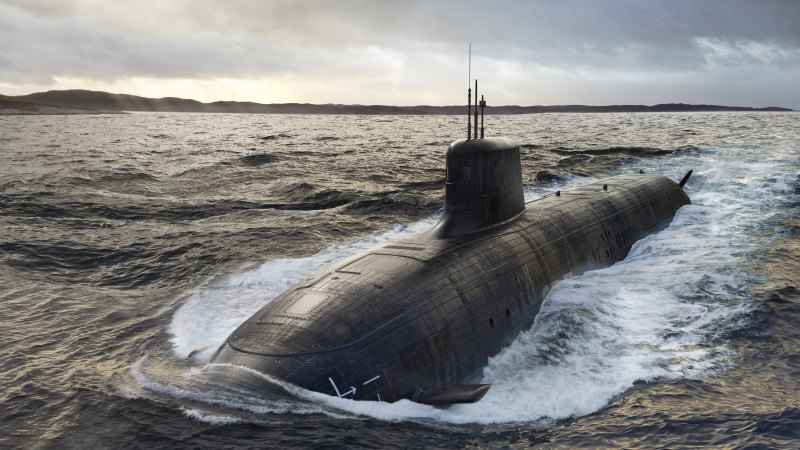
Top AUKUS officials have pushed back at claims the United States will not be able to transfer promised nuclear-powered submarines to Australia, arguing the rapid integration of hundreds of Australian submariners into the American fleet shows the pact is on track. William Houston, the four-star admiral who runs the US nuclear naval program, said one in 10 submariners serving on the US Navy’s prized Virginia-class attack submarines in the western Pacific would soon be Australian, highlighting its commitment to AUKUS. Australia plans to purchase three to five Virginia-class nuclear-powered submarines from the United States.
Credit: ADF Asked during a visit to Australia whether it was possible the US could decline to provide the promised three to five Virginia-class submarines in the early 2030s, Houston said: “We are fully committed to the sale and transfer of the submarines we have discussed to Australia. “We are fully committed to that, and we don’t look at it as a subtraction, we look at it as an addition. “AUKUS is a strategic imperative for all three of our nations.

” Prominent critics of the AUKUS pact between the US, Britain and Australia, including former prime minister Malcolm Turnbull and defence commentator Hugh White, have argued that blockages in the American industrial base make it unlikely the US will be able to start transferring nuclear-powered submarines to Australia from 2032 as promised. The US is building an average of about 1.3 submarines a year but will need to raise that to 2.
33 boats a year to provide three Virginia-class submarines to Australia as agreed under the AUKUS plan. Legislation passed by the US Congress requires the president of the day to certify that the transfer of submarines to Australia “will not degrade the United States’ undersea capabilities” and is conditional on the US “making sufficient submarine production and maintenance investments” to meet its own needs. Houston, who previously served as the US Navy’s top submarine commander, said the US viewed increasing its submarine production rate as a “national endeavour”, explaining why it was hiring an extra 40,000 workers and pouring $US10 billion ($15 billion) into its industrial base.
“Our submarines are an asymmetric advantage, and I will say that there is broad bipartisan support for our efforts to build these submarines because they’re important, not only for our defence but also for the AUKUS program,” he said. “It will be challenging, but I believe we will be on the path to achieve this.” Houston said the US Navy had “very detailed plans to prioritise getting Australian submariners on our submarines in the western Pacific”, primarily based out of the Pearl Harbour naval base in Hawaii.
“And about 10 per cent of the crew that goes to sea on Virginia-class submarines, as you complete your training program, will be Australian submariners,” he said, a figure that will include up to three officers per submarine. Australian submariners in Perth last week began maintenance operations on USS Hawaii, a Virginia-class submarine: the first time foreigners have ever performed such a task for the US Navy. Vice Admiral Jonathan Mead, director-general of the Australian Submarine Agency, said about 100 Australian submariners would be training with the US Navy on nuclear-powered submarines from next year, a figure that would continue to rise to more than 400 in coming years.
“We are making history every day here,” Mead said. “AUKUS is real, it’s happening now.” Australia currently has about 850 submariners, a figure that will need to grow significantly to meet the demands of the AUKUS program.
Based on his regular discussions with counterparts in Washington, Mead said he was confident the US would be able to transfer Virginia-class submarines to Australia as promised. Cut through the noise of federal politics with news, views and expert analysis. Subscribers can sign up to our weekly Inside Politics newsletter .
.














